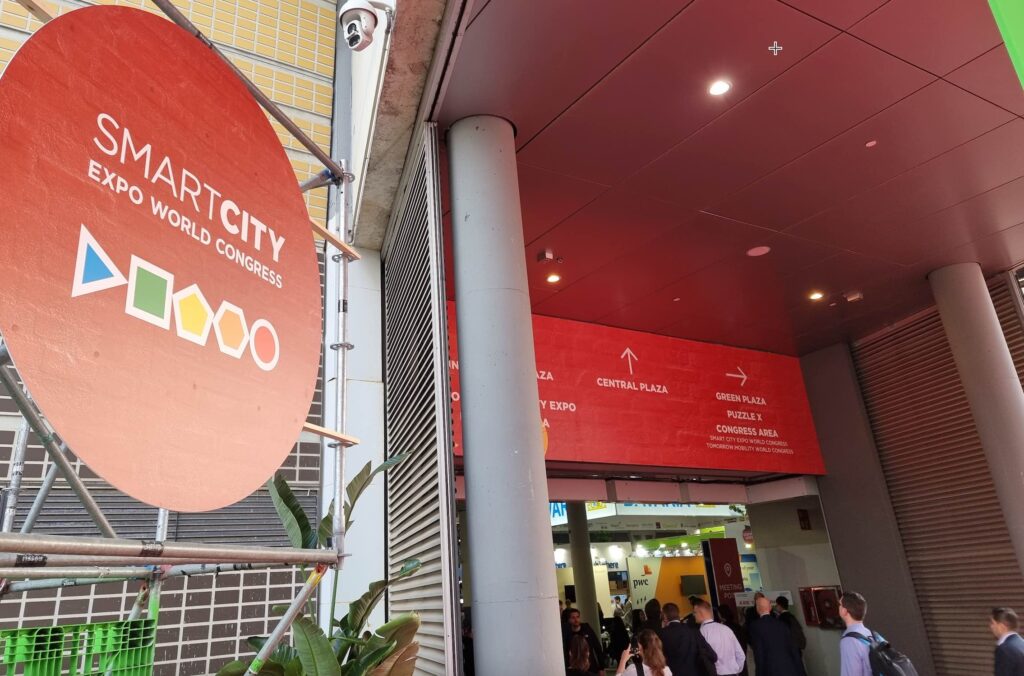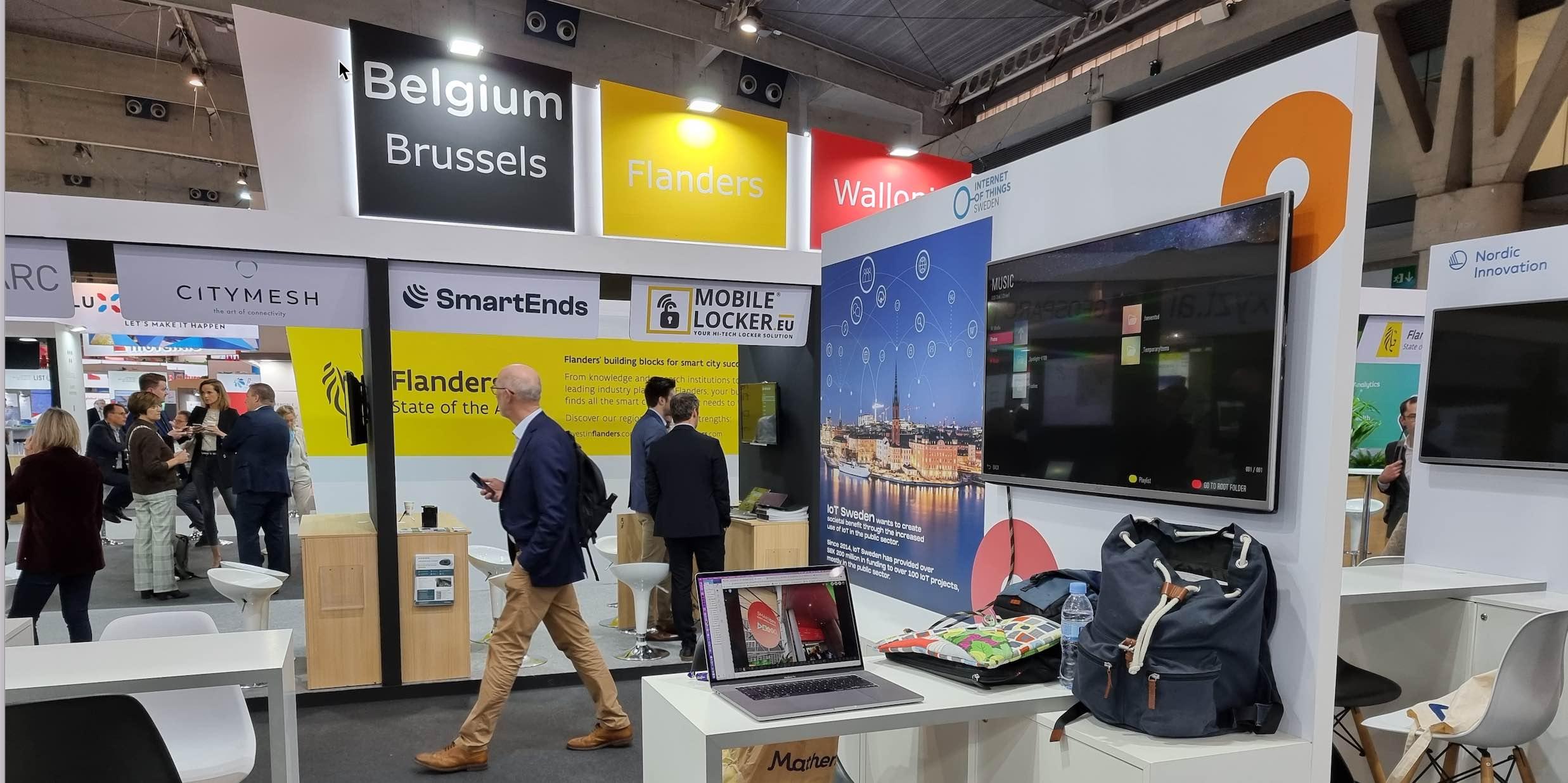What impacts do cities achieve with their Smart City initiatives?
A survey at the Smart City Expo in Barcelona 2022.
The Smart City Expo 2022 in Barcelona was a wonderful three days of lectures, exhibit stands, companies, countries, regions and cities, not to mention visitors. It was difficult to get a proper overview, so to create some structure I went around to the stands representing countries, regions or sometimes individual cities and asked three questions.
– What are your most successful implementations of IoT or smart city solutions?
– What impacts have they had?
– Have you measured the impacts and have figures on them?
Before we get to the results of that survey, I can say that the representation from cities at an expo specifically about smart cities was poor. Out of a total of 850 exhibitors, I managed to find 22 cities. While these certainly were not all of them, they were the only ones I managed to find. Several of them were in a single stand for a region or country. Sweden was represented by Stockholm and Helsingborg, where the capital had its own stand next to the big collective stand for the Nordics+ (Latvia was also part of it), which is where Helsingborg could be found.
All cities are doing pilots and PoCs
Generally speaking, there were very few successful implementations. Virtually all cities are doing pilots and PoCs. None could point to clear impacts, with the exception of the City of Helsingborg and the City of Stockholm, where the latter also shares them openly on its Smart and Connected City website in an exemplary way. This shows how immature the whole concept of smart cities is. Almost everyone is in a play period of doing lots of things without much control, goal or purpose beyond “learning”. Given the enormous potential and not negligible costs of IoT, it is not justifiable. Especially as cities have not readily shared what they have learned, so the knowledge is not spread in a good way.
It is very clear that Swedish cities are relatively far ahead in terms of benefits and impacts, but this may be partly because I found it easier to have a dialogue with them. However, the fact that almost no other cities could present clear benefits is very worrying.
A minimum requirement for starting a pilot/PoC nowadays should be a pre-identified and clear process for making decisions on possible scaling. Few if any seem to have this in place, and without this structure we will not see any significant impact either, only costs. I want to be clear that I do not have a problem with smaller test projects to verify a hypothetical benefit or to learn something specific, but it needs to be tied in with a larger benefit perspective in a structured way. Again, Stockholm is an exception and even Helsingborg thinks holistically in an impressive way.

Exceptions that confirm the rule
There were some interesting cities that are worth highlighting and discussing.
Stockholm
Stockholm has been working for a long time on projects within the Smart and Connected City programme. The impacts it highlights are that it has learned how to procure and implement IoT through its structured work on, among other things, smart lighting, traffic management and locks. Future deployments will be smooth and relatively easy thanks to this.
In the work with smart locks, a business case, needs analysis and method for benefit calculation including a template in Excel have been developed, which is much more than any other municipality has been able to present. It also published a report in 2020 on lessons learned and recommendations for introducing smart locks to increase the chances of achieving all the benefits described in the project. Claes Johannesson of the City of Stockholm highlights that one of the most important benefits achieved is reduced frustration among staff. Key management was previously perceived as a major problem.
For smart lighting, the city has been working with impact targets in the economic, ecological and social fields. The report with project experiences and recommendations discusses the benefits that can be achieved.
Smart traffic management is the third PoC in the Smart and Connected City programme. Here too there are economic, ecological and social impact targets, and the outcomes for these are also presented in the report. It is not at the level of numbers, but rather presents the overall level of reasoning. The report, which was published in 2020, shows a number of benefits that smart traffic management can bring if implemented more widely.
Stockholm has also worked earnestly to hand over its PoCs to the operational organisations, which will then decide whether or not they want to implement them on a major scale. A very important component that many miss. For full transparency, I worked in a sister project on Open and Shared Data in the Smart and Connected City programme and have more insight here than in other cities’ work.
Helsingborg
One of the cities that has been working with IoT and smart cities for a long time in a structured and deep way, and shares the knowledge it has gained on the page Innovation in Helsingborg. Many of the benefits they see from the work are difficult to quantify, such as:
- Better working environment and increased safety for employees
- Knowledge of actual conditions and operating history before the municipality takes over the operation of the outdoor environment from a developer
- Ability to plan operations based on data, not guesswork
- Impacts often come later and IoT is a bit too new to have seen all the impacts yet
- Data helps us identify which questions need to be answered
Health and safety come from the use of sensors that measure moisture and irrigation needs of trees in the central median of a 2+2 lane road. It costs about SEK 6,000/hour in vehicle costs to water the trees, and workers are at risk when performing this job. Sensor data allows watering only when really needed, thereby minimising costs and risks. The cost of replacing dead trees in the municipality is reported to be about SEK 15 million/year. If this cost can be reduced, it is also a benefit.
Knowledge of operating history is based on the fact that when a new area is built, the developer is often responsible for communal environments for a few years before they are transferred to municipal management. Continuous measurements allow the municipality to see whether the builder has fulfilled its obligations.
Great future opportunities are seen in relation to reducing costs, improving quality and simplifying management by being able to make more data-driven decisions.
Helsingborg is in the process of replacing 33,000 lighting points. The old ones are 40-45 years old, so they are very energy inefficient and it is difficult to find spare parts. The new luminaires will be LED and will also act as nodes in an IoT network to connect nodes in the physical space. Dense nodes allow cheaper technologies to be used for connectivity. For example, a chip for Bluetooth costs about SEK 150, while one for Lora costs about SEK 1,500. If IoT is to be scaled, the cost must be kept as low as possible.
The cost of lighting up the city is usually around SEK 12 million/year but has increased to SEK 24 million with increased electricity prices. This has led to the planned introduction date for smart lighting being reduced from 10 years to 5 years, as the smart lighting is estimated to save 70% in electricity costs. The payback period was estimated at 10 years with the lower electricity prices, but will be even faster with the current prices.
Curridabat
The first city I talked to raised hopes that I would find out a lot of exciting information I did not know about. Unfortunately, as I said, it was one of the exceptions to the rule. The city in question was Curridabat, located in Costa Rica. They have been working on smart city solutions, but with a different approach than the one I am used to, which is refreshing. Their goals and metrics are biodiversity, not economy, efficiency or satisfaction. They have established environmental zones, where plants are planted to attract insects and thus increase diversity. They have established the zones and carried out an initial measurement of biomass and diversity. In the coming year, this will be monitored to see progress against defined KPIs. Here, I think that IoT can probably be used to measure diversity. Maybe through cameras or possibly microphones. They are also working on measuring water levels in the river to get an early warning of flooding, which is a recurring problem, and they are in the process of measuring air quality.
Tampere
Here we have one of the shining exceptions. Tampere says it has figures on the impact of a test project to predict road maintenance needs. These are said to be presented in a final report, which I have not yet received, unfortunately. They also use sensors to measure when it is time to sand roads.
Guelph and county of Wellington
My visit to the Guelph stand, which was part of the Canadian stand, made me realise that we are often at the forefront here in Sweden and Europe. In the last few years, they had implemented a project to collect compostable waste from households and businesses instead of dumping it in landfills. I do not even remember when we did NOT compost where I live, and it took me a while to understand what they were talking about. I assumed there was something about their project that went over my head, because it seemed so basic.
One interesting story was a cookie manufacturing company that used to pay to throw away all the crumbs produced, but now instead sells them to a company that makes sauces. The sauce company used to import crumbs from abroad. Quite simply a win-win in the local circular economy.
Tel Aviv
Shared parking is the concept being worked on here. If a car without a permit parks in a shared parking space, a fine is issued automatically. According to preliminary analyses, this has changed the behaviour of road users significantly in the short term. No formal figures have yet been produced.
Miscellaneous
Frankfurt has transparency and access to data as its main goal. Tokyo reportedly has figures on impact, but I never managed to get hold of the right person at the stand. It was a bit tricky to talk to the Asian countries, as their English is rarely good and they often have corporate representatives speaking for the public sector, which was not really what I was after.
Written by: Björn Hagström
Björn Hagström
Expert in Information Management and Open Data, Smart City Lab.
Björn Hagström runs a network within the IoT Sweden project Smart City Lab and has experience from several IoT projects. Björn also works a lot with information management in general, with a focus on open and shared data, and has been involved in developing most of the support that the Agency for Digital Government (DIGG) has in this area. Björn also previously spent 14 years working as part of Örebro Municipality.

